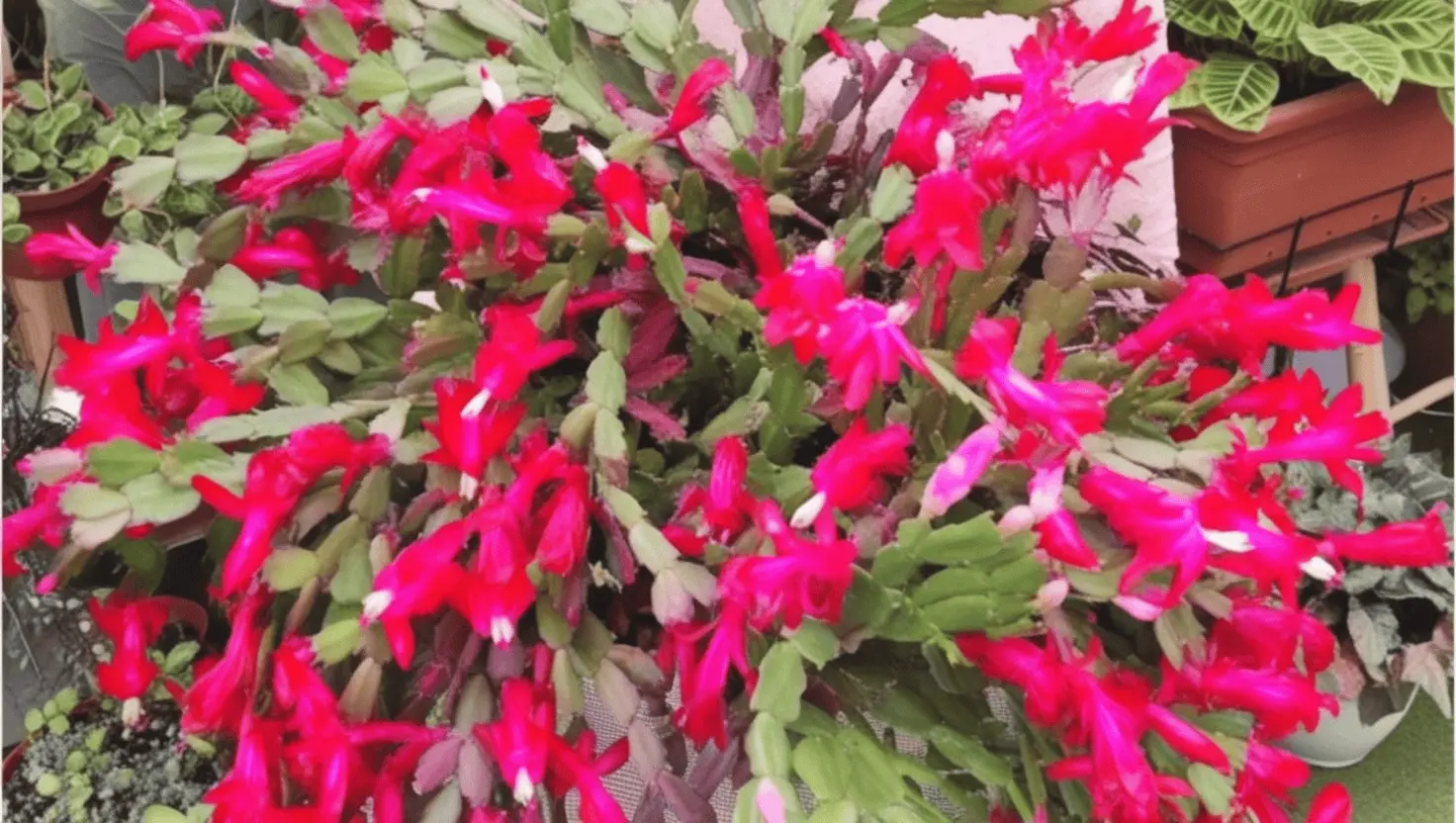The Christmas Cactus (Schlumbergera bridgesii) is a beloved houseplant, known for its vibrant blooms during the holiday season. Unlike typical desert cacti, the Christmas Cactus hails from the tropical rainforests of Brazil. It requires a unique approach to care, which we will explore in detail. In this guide, we’ll discuss how to grow and nurture a Christmas Cactus so it thrives year after year.
1. Choosing the Right Pot and Soil
Soil: Christmas Cactus thrives best in a well-draining soil mix. Opt for a cactus-specific potting mix or make your own by combining regular potting soil with sand or perlite. This prevents water from pooling, which could lead to root rot. A slightly acidic pH of 5.5-6.2 is ideal.
Pot: Ensure your pot has drainage holes to allow excess water to escape. Christmas Cacti prefer to be somewhat root-bound, so choose a pot that’s only slightly larger than the root ball of the plant.
2. Proper Watering Techniques
The watering needs of the Christmas Cactus vary depending on the season. During the growing season (spring and summer), keep the soil moist but not waterlogged. Water thoroughly when the top inch of soil feels dry. In contrast, during the fall and winter months, reduce watering to encourage blooming. Overwatering is one of the most common causes of Christmas Cactus failure, so it’s crucial to monitor the soil’s moisture levels.
A good rule of thumb is to allow the soil to dry out slightly between waterings. Always use lukewarm water, as cold water can shock the plant’s roots.
3. Light Requirements
Christmas Cactus thrives in bright, indirect light. Avoid direct sunlight, especially during the summer, as it can scorch the leaves. Place the plant near a window that gets indirect sunlight for the best growth results.
In the fall, reduce the amount of light to encourage blooming. The Christmas Cactus requires about 12-14 hours of darkness at night for at least 6-8 weeks to set flower buds. This process is known as photoperiodism, and it is essential for ensuring a full bloom during the holiday season.
4. Temperature and Humidity
The Christmas Cactus enjoys a temperate climate, with ideal temperatures ranging between 60-70°F (15-21°C) during the day and slightly cooler temperatures at night. Avoid placing the plant near drafty windows or doors, as sudden temperature changes can cause stress.
Humidity is also important. Since Christmas Cacti are native to tropical rainforests, they prefer a humid environment. If your home is dry, especially during the winter months, consider placing a humidifier nearby or setting the pot on a tray filled with pebbles and water to increase humidity levels.
5. Fertilizing for Optimal Growth
Fertilize the Christmas Cactus during its active growing period (spring through early fall). Use a balanced, water-soluble fertilizer (20-20-20 or 10-10-10) every 4-6 weeks. Make sure to dilute the fertilizer to half its strength to prevent damaging the plant’s roots.
During the fall and winter months, stop fertilizing. This rest period helps the plant focus its energy on blooming rather than leaf growth.
6. Encouraging Blooming
One of the most rewarding aspects of owning a Christmas Cactus is its stunning blooms. However, it requires specific conditions to encourage blooming. Follow these steps to ensure your plant flowers:
- Darkness and Cooler Temperatures: As mentioned earlier, the Christmas Cactus needs around 12-14 hours of complete darkness each night for 6-8 weeks to set flower buds. Additionally, maintain nighttime temperatures between 50-55°F (10-13°C) during this period.
- Watering Schedule: Cut back on watering slightly during the fall months, but don’t let the soil dry out completely.
- No Fertilization: Stop feeding the plant in the fall to encourage blooming.
Once buds start forming, you can resume normal watering and move the plant to its preferred bright, indirect light spot.
7. Pruning and Repotting
Pruning: After blooming season, it’s beneficial to prune the Christmas Cactus to encourage branching and fuller growth. Use sharp, sterile scissors to trim back a few segments from the ends of each branch. This will encourage the plant to retain a tidy, compact form.
Repotting: The Christmas Cactus doesn’t need frequent repotting and prefers to be slightly root-bound. Repot every 2-3 years in the spring, when the plant isn’t in its blooming cycle. Choose a pot that’s only slightly larger than the current one to avoid overwhelming the roots.
8. Common Problems and Solutions
- Overwatering: As mentioned, overwatering can lead to root rot. Always ensure your pot has drainage holes and avoid letting the plant sit in water.
- Yellowing Leaves: If the leaves of your Christmas Cactus are turning yellow, it could be a sign of either overwatering or poor drainage. Check the soil and adjust your watering schedule accordingly.
- Bud Drop: If the buds fall off before blooming, it’s likely due to sudden changes in temperature or light, or from underwatering. Ensure stable conditions to avoid stress during the blooming process.
- Pests: Common pests include mealybugs, spider mites, and scale insects. If you notice any pests, wipe the plant with a cloth dipped in alcohol, or treat it with insecticidal soap or neem oil.
9. Propagating Christmas Cactus
Propagating the Christmas Cactus is a simple and rewarding process. Follow these steps to grow new plants from cuttings:
- Take Cuttings: Using a clean, sharp knife or scissors, cut off a section of 2-3 segments from a healthy branch.
- Let It Dry: Allow the cuttings to dry for a day or two, which helps prevent rotting when placed in soil.
- Plant: Insert the cutting into a small pot filled with a moist, well-draining potting mix. Keep the soil slightly damp and place the pot in indirect sunlight.
- Roots Formation: Within 4-6 weeks, the cutting should form roots, and you’ll have a new Christmas Cactus ready to grow!
Conclusion
With the right care, a Christmas Cactus can live for decades, brightening your home each holiday season with its festive blooms. By paying attention to its specific needs for water, light, temperature, and humidity, you can ensure a healthy and thriving plant that will reward you year after year.

